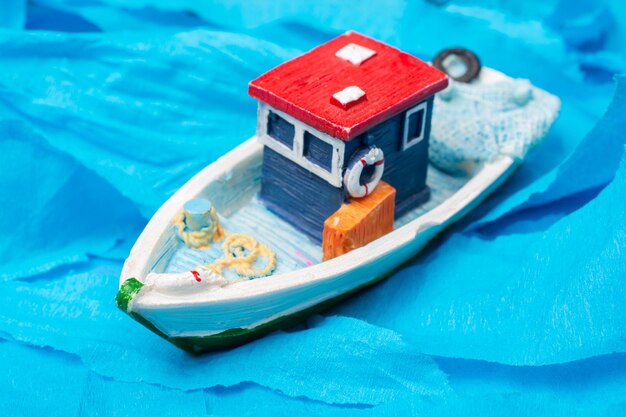Marine Insurance
Marine insurance is an essential component of the global maritime industry, providing vital financial protection for shipping companies, vessel owners, and cargo operators. Given the inherent risks associated with maritime activities—ranging from weather-related incidents to piracy and accidents—marine insurance ensures that stakeholders can mitigate potential losses and operate with confidence. This article explores the importance of marine insurance, the types of coverage available, key considerations when selecting a policy, and tips for optimizing marine insurance protection.
The Importance of Marine Insurance
Risk Mitigation in Maritime Activities
Maritime operations are fraught with risks, including natural hazards like storms and tsunamis, mechanical failures, human errors, and threats such as piracy. Marine insurance mitigates these risks by providing financial protection against a wide range of potential incidents, ensuring that businesses involved in maritime activities can recover and continue operations even after significant setbacks.
Legal and Regulatory Compliance
Marine insurance is often a legal requirement for shipping companies and vessel owners. International maritime laws and regulations mandate insurance coverage to protect against liabilities and ensure compensation for damages and losses. Compliance with these regulations is crucial for avoiding legal penalties and maintaining operational legitimacy.
Financial Stability and Business Continuity
The financial impact of maritime incidents can be devastating, potentially leading to bankruptcy or severe financial strain. Marine insurance provides a safety net, covering losses and liabilities that could otherwise cripple a business. This financial stability is essential for ensuring business continuity and maintaining stakeholder confidence.
Types of Marine Insurance Coverage
Marine insurance encompasses various types of coverage, each tailored to address specific risks and needs within the maritime industry. Understanding these coverage options is key to selecting the right policy.
Hull Insurance
Hull insurance covers physical damage to the vessel itself, including the hull, machinery, and equipment. This type of insurance protects against losses resulting from collisions, grounding, fire, and other perils. Key features include:
- Total Loss: Coverage for the complete loss of the vessel due to catastrophic events.
- Partial Loss: Coverage for damage repairs and partial losses, ensuring the vessel can be restored to operational condition.
Cargo Insurance
Cargo insurance protects goods being transported by sea against loss or damage. This coverage is crucial for shippers and consignees, ensuring that the value of their cargo is protected throughout the voyage. Types of cargo insurance include:
- All-Risk Coverage: Comprehensive protection against all risks of physical loss or damage, subject to specific exclusions.
- Named Perils Coverage: Protection against specific risks explicitly listed in the policy, such as fire, theft, and piracy.
Liability Insurance
Liability insurance covers the legal liabilities arising from maritime operations. This includes protection against claims for bodily injury, property damage, and environmental pollution. Key types of liability insurance include:
- Protection and Indemnity (P&I) Insurance: Coverage for third-party liabilities, including injury to crew members, passengers, and third parties, as well as damage to cargo and other vessels.
- Charterers’ Liability Insurance: Coverage for liabilities assumed by charterers under charter party agreements, including damage to the chartered vessel and third-party claims.
Freight Insurance
Freight insurance protects the shipping company’s financial interest in the freight charges due for the transportation of goods. This coverage ensures that freight income is protected if the cargo is lost or damaged during transit.

Key Considerations When Selecting Marine Insurance
Choosing the right marine insurance policy requires careful consideration of various factors to ensure comprehensive protection.
Assessing Risk Exposure
Understanding the specific risks associated with your maritime operations is crucial. Conduct a thorough risk assessment to identify potential hazards, vulnerabilities, and the likelihood of different incidents. This assessment will help determine the appropriate coverage types and limits for your policy.
Evaluating Coverage Options
Marine insurance policies can vary widely in terms of coverage limits, exclusions, and endorsements. Carefully evaluate the coverage options offered by different insurers to ensure they align with your risk profile and needs. Pay particular attention to:
- Coverage Limits: Ensure the policy provides sufficient coverage limits to protect against potential losses.
- Exclusions: Understand what is excluded from coverage to avoid surprises in the event of a claim.
- Endorsements: Consider any additional coverage options or endorsements that may enhance the policy’s protection.
Understanding Policy Terms and Conditions
It is essential to thoroughly review the terms and conditions of a marine insurance policy. Key areas to focus on include:
- Policy Warranties: Understand the warranties imposed by the policy, such as maintenance requirements and navigational limits, to ensure compliance and avoid coverage disputes.
- Deductibles: Review the deductible amounts and consider whether they are appropriate for your financial situation.
- Claims Process: Familiarize yourself with the claims process, including documentation requirements and timelines for filing claims.
Working with a Specialized Broker
Marine insurance is a complex and specialized field. Working with a broker who has expertise in marine insurance can provide valuable insights and guidance in selecting the right policy. A specialized broker can help navigate the intricacies of coverage options, negotiate favorable terms, and ensure the policy aligns with your specific needs.
How to Optimize Marine Insurance Protection
Having a marine insurance policy is only part of the solution. To maximize the benefits of marine insurance, businesses should adopt a proactive approach to risk management.
Implement Robust Safety Measures
Enhancing the safety of maritime operations can significantly reduce the risk of incidents. Implementing robust safety measures, such as regular vessel maintenance, crew training, and adherence to safety protocols, can help prevent accidents and minimize losses. Many insurers offer premium discounts for vessels with advanced safety measures.
Maintain Proper Documentation
Accurate and comprehensive documentation is crucial for ensuring smooth claims processing. Maintain detailed records of vessel maintenance, cargo manifests, crew certifications, and incident reports. Proper documentation can streamline the claims process and ensure that you receive the full benefits of your coverage.
Regularly Review and Update Coverage
The risks and needs of maritime operations may change over time. Regularly reviewing and updating your marine insurance coverage ensures it remains aligned with your current risk profile and operations. This includes adjusting coverage limits, adding endorsements, and addressing any changes in your business activities.
Develop a Contingency Plan
A comprehensive contingency plan is essential for addressing potential incidents that may arise during maritime operations. This plan should outline the steps to be taken in the event of an incident, including roles and responsibilities, communication protocols, and procedures for mitigating the impact. Regularly reviewing and updating the contingency plan ensures preparedness and swift action when needed.

Real-Life Examples of Marine Insurance in Action
Example 1: Cargo Loss
A shipping company experienced a severe storm during a voyage, resulting in the loss of several containers overboard. The company’s cargo insurance policy provided coverage for the lost goods, compensating the shippers for their financial losses and maintaining their trust in the shipping company.
Example 2: Vessel Collision
A cargo vessel collided with another vessel in a busy shipping lane, causing significant damage to both vessels. The vessel owner’s hull insurance policy covered the cost of repairs, while the P&I insurance policy provided coverage for the third-party liabilities arising from the collision, including injury claims and environmental damage.
Example 3: Piracy Incident
A vessel was hijacked by pirates off the coast of Somalia, resulting in the loss of cargo and ransom demands. The shipping company’s marine insurance policy included coverage for piracy, compensating for the lost cargo and ransom payments, and ensuring the safe return of the vessel and crew.
Conclusion
Marine insurance is an essential safeguard for the maritime industry, providing comprehensive protection against the myriad risks associated with maritime operations. By understanding the types of coverage available, carefully evaluating policy options, and adopting proactive risk management strategies, businesses can ensure robust protection for their maritime ventures. Investing in marine insurance is not just a protective measure; it is a strategic decision that ensures financial stability, compliance, and business continuity in the unpredictable world of maritime activities.